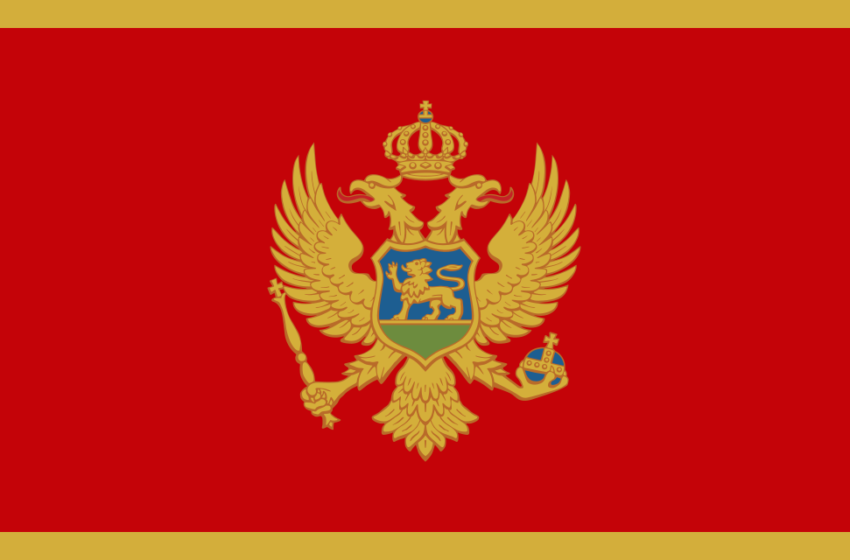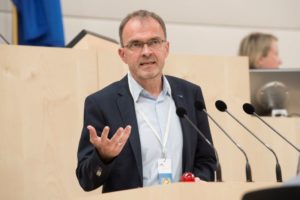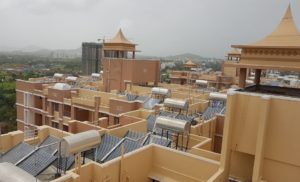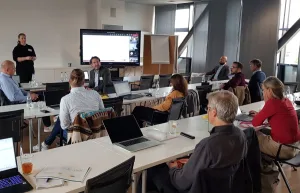

Montenegro: Montesol is dead, long live Montesol!
Montesol, the expired credit line for the installation of solar water heaters in Montenegrin households, may be extended, according to a source at Montenegro’s Directorate for Energy Efficiency (DoEE). In July 2011, the second phase of Montesol was launched as a joint project between the Montenegrin Ministry of Economy, the United Nations Environment Programme (UNEP) and the Italian Ministry for the Environment, Land and Sea (IMELS). Initially, it was thought to end on 31 October 2013. “First, we signed an extension to the partnership agreement with the UNEP to extend the programme until 31 December 2013. Now, we are working on an amendment in order to continue Montesol´s implementation,” a DoEE spokesperson replied to a media enquiry, without giving specific information about the future conditions and terms of the Montesol programme.
Until the end of 2013, the programme had offered natural persons loans of up to EUR 5,000 with a repayment period of seven years and zero interest. DoEE data shows that the offer resulted in the approval of 115 loans of EUR 1,350 or more over the last two years. The money was invested in the installation of 115 solar water heating systems with a total surface area of 590 m2.
13 Montenegrin companies – eligible equipment dealers and installers – participated in the Montesol project. Commercial banks NLB Montenegrobanka and Hypo Alpe Adria had been chosen to offer the loans. “We approved 91 loans amounting to around EUR 310,000,” Ivana Mićević says. According to the Montesol Project Manager at the NLB Montenegrobanka, the Montesol programme, which had so far focused exclusively on residential installations, could soon be extended to include legal entities as well. The DoEE confirmed its plans to also develop a sustainable solar thermal energy market in the commercial sector: “We are planning to extend the Montesol project to include specific entities in the Montenegrin tourism industry and offer them interest-free loans amounting to EUR 50,000. The loan conditions will be modified accordingly to cover these legal entities from the tourism industry.”
Tourism is Montenegro’s most important service industry. It has seen a construction boom over the last decade, which means that “the demand for sanitary hot water installations has dramatically increased during the tourist season in summer,” the final draft of the Energy Development Strategy of Montenegro by 2030, EDS, states. This strategy document was adopted in June 2012 and is also known as the “Green Book”. “Solar thermal systems are rare, even in coastal areas, across which solar energy is available in abundance,” the paper’s authors claim. It is thought to be the subsidised electricity prices which have so far had hotel owners and homeowners alike use electricity for space and water heating.
The EDS experts recommend substituting electricity and fossil fuels in the final energy consumption with renewable energies, mainly solar thermal and modern biomass systems. “The measures to promote such priorities combine awareness campaigns, provision of incentives, technical assistance and advice,” the Green Book reads. The authors say that the sun could provide almost 11% of the energy for hot water in 2030 if solar collectors were installed on 28% of all houses in Montenegro. In this scenario, solar thermal energy would grow almost sevenfold, from 0.063 PJ to 0.436 PJ.
More information:
Directorate for Energy Efficiency, Montenegrin Ministry of Economy: http://www.energetska-efikasnost.me
United Nations Environment Programme (UNEP): http://www.unep.org
Italian Ministry for the Environment, Land and Sea (IMELS): http://www.imels.it
Energy Development Strategy of Montenegro by 2013: http://www.seaeds.me/images/120627_Output_3-1_Green_Book_final_draft_ENG.pdf


